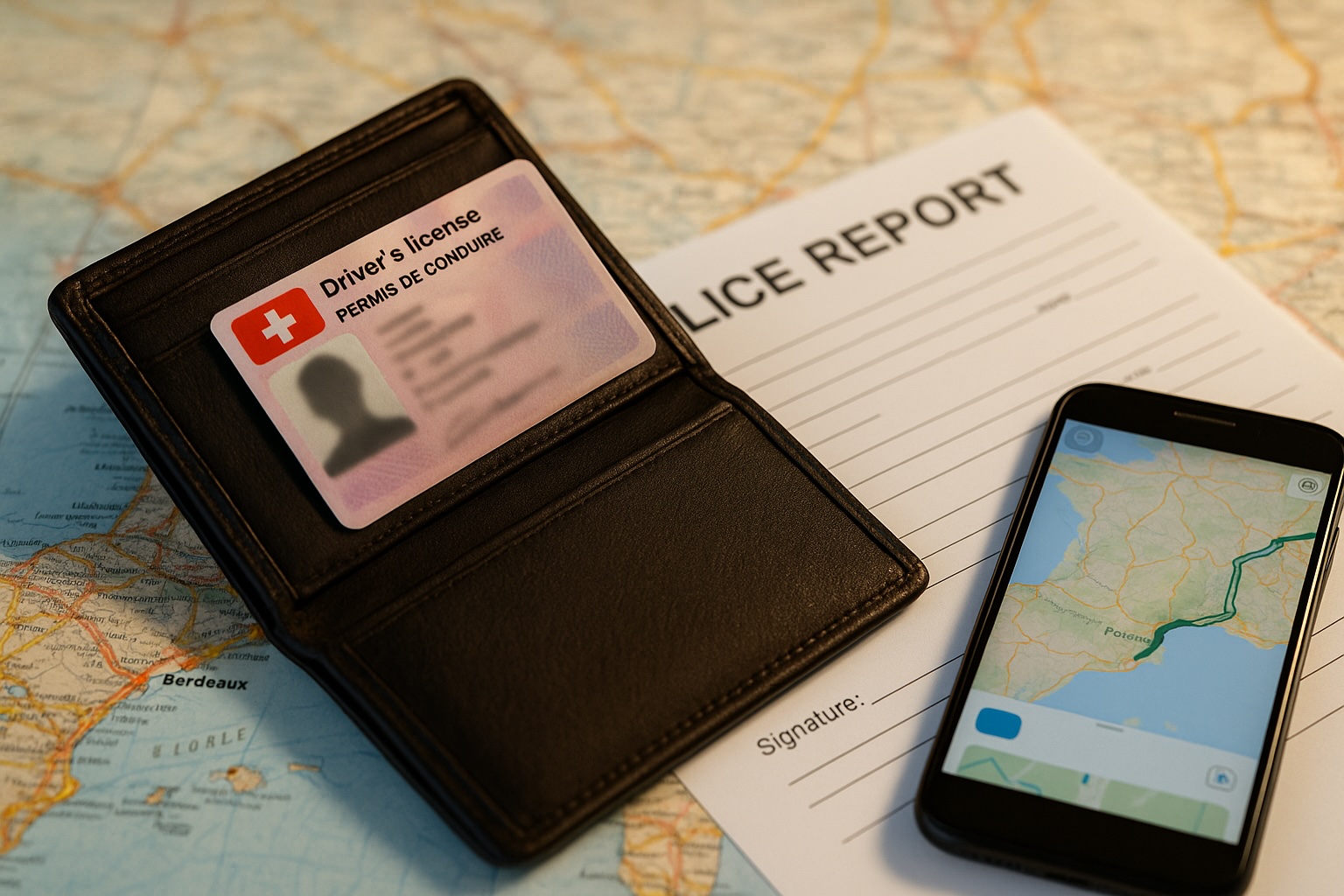Discover practical steps to take if you lose your driver’s license during a European road trip, from filing a police report to arranging temporary permits and returning home safely.
Keywords:
lose driver’s license Europe, passport police report, temporary driving permit, EU road trip tips, Summer in Europe
What to Do If You Lose Your Driver’s License During a European Road Trip
Losing your driver’s license while exploring Europe can quickly turn an adventure into a stressful ordeal. Whether you’re winding through the Alps, cruising along the Mediterranean coast, or navigating ancient city streets, having no license means you can’t legally drive—and replacing it abroad takes time. Follow these steps to minimize disruption, stay safe, and get back on the road as soon as possible.
Understand the Immediate Consequences
Without your physical license you risk fines or being unable to continue your journey by car. Rental companies may refuse to extend your agreement. Local police could issue penalties if you’re pulled over. Acting swiftly prevents further costs and complications.
Pause and Retrace Your Steps
As soon as you realize your license is missing, pull over safely and think back. Check pockets, bags, glove compartments, hotel rooms, cafés or rest stops. In many cases, a quick retrace will turn it up. If it’s truly gone, move to the next step without delay.
File a Police Report
Head to the nearest police station (“Polizia” in Italy, “Gendarmerie” in France, “Polizei” in Germany, etc.). Explain what happened and provide identifying information. Request an official report or loss declaration—this document is essential for both local authorities and your home DMV. Keep multiple copies; some countries require an original.
Contact Your Home DMV
Call or email your country’s licensing authority (e.g., Driver and Vehicle Licensing Agency in the UK, DMV in the US). Ask about emergency replacements or duplicate licenses for travelers. Many offer an expedited temporary license or digital certificate you can print.
Visit Your Embassy or Consulate
If you’re a long way from home, your embassy or consulate can help. They may advise on local procedures, supply a letter confirming your identity, or facilitate communication with your home authority. Bring your passport, police report, and travel itinerary.
Obtain a Temporary or International Driving Permit
Some EU countries issue emergency temporary permits valid for a few days or weeks. Check with local transport offices (e.g., Prefecture in France, Straßenverkehrsamt in Germany). If you had an International Driving Permit (IDP) alongside your original license, carry it. An IDP alone isn’t valid without the original, but it may help rental companies or police verify your credentials while you sort the replacement.
Inform Your Rental Car Company
Call your rental agency’s local office immediately. Explain your situation and show them the police report. They may let you swap vehicles at a central location or accept your temporary permit. If not, you might have to return the car and switch to public transport. Document all conversations and agreements in writing.
Rely on Alternative Transportation Temporarily
While awaiting your replacement, use trains, buses, trams, taxis or ride-share services. Europe’s rail network is extensive and often faster than driving. Regional bus lines connect even remote villages. Look into rail passes or multi-day tickets to save money.
Arrange for License Replacement Delivery
If your home DMV can mail a replacement to your Swiss address or the nearest consulate, ask them to do so via express courier (DHL, FedEx). Confirm the consulate’s acceptance procedures and fees. Be aware delivery may take one to two weeks.
Use Digital Backups
Always carry a scanned copy of your license and passport stored securely in the cloud (e.g., Google Drive, Dropbox) or on your phone. While not a legal substitute, presenting a digital copy alongside your police report and passport can help authorities confirm your identity.
Plan for Neighboring Countries’ Rules
Driving regulations vary across EU nations. If you lose your license in France but plan to drive on to Spain, confirm Spain will accept the French police report and your temporary permit. Contact transport offices in each country you intend to drive through to avoid border refusals.
Stay in Contact with Travel Insurance
If you purchased travel insurance that covers document loss, notify your insurer. They may reimburse costs for police reports, permit fees, consular services, courier delivery, or any fines incurred. Keep all receipts and file claims promptly.
Keep Your Itinerary Flexible
Losing a license may force you to rearrange hotel bookings or tours. Reschedule refundable reservations and adjust plans. Notify any pre-booked activities of your delayed arrival.
Learn from the Experience
In hindsight, you may wish you had taken extra precautions. Consider these preventive steps for your next trip:
• Store your license in a secure, zipped compartment.
• Carry an IDP alongside your national license.
• Leave a photocopy with a trusted friend or family member back home.
• Digitally back up important documents.
• Purchase travel insurance covering document loss.
Return Home Safely
Once you receive your replacement license, verify its authenticity and validity dates. Keep the paper copy safe until you return. If you receive a permanent duplicate at home after returning, destroy the temporary permit if required.
Conclusion
Losing a driver’s license during a European road trip can be an overwhelming setback. However, by retracing your steps, promptly filing a police report, obtaining temporary permissions, and leveraging alternative transport, you can minimize stress and continue exploring. Preparation, digital backups, and a calm, methodical approach will turn this mishap into just another memorable travel story. Safe travels and drive on!
